Hamilton Road stables
In the mid-1960s a vast area of land, owned by the Jockey Club, close to the Heath, gallops and Rowley Mile course, was earmarked by the Jockey Club to form part of a massive venture aimed at increasing the number of stables in Newmarket, On the Hamilton Road plans were presented for the new stables, and the first to take advantage of the new scheme was former champion jockey turned trainer, Doug Smith. In December 1967, three days before Christmas, Doug announced that he would be moving his string of 30 horses from the yard of his former master, Geoff Brooke, and relocating to a gleaming new yard, the first of several offered to prospective tenants by the Jockey Club. Over half a century on, in 2020 the Hamilton Road contained in excess of 25 such racing establishments, many having changed owners, trainers and stable names on a regular basis since Doug Smith first occupied Cedar Lodge Stables back in early 1968. They offer direct and easy access to all of the Jockey Club Estates facilities and gallops, all within easy reach of the Warren Hill gallops. The Jockey Club cares for 2500 acres of maintained gallops, which includes over 50 miles of turf gallops, and since those early days of 1967 many Classic winners have been sent out from the wide array of Hamilton Road Stables.
1986- 1988 David Ringer
In the early days of Saffron House Stables the residents were the Ringer family. David John Ringer, born July 1959, son of David Stanley Ringer, born February 1931, and Shonagh Ringer, were all registered at Saffron House. It is not known whether David senior, or his son, owned the licence at that point in time, and David Ringer was certainly registered as the trainer at Saffron House Stables in 1987.
For over 4 centuries racing has been staged in Newmarket, but how have the racecourses evolved from an initial starting point at Fleam Dyke Pumping Station, some 8 miles from the town, with a winning post barely 200 metres from the town centre, into two world recognized, excellent racecourses and a universal acceptance that Newmarket is the Headquarters of racing?
To access an interactive racecourse map showing over 50 individually named racecourses CLICK HERE. The map will enable you to:-
1. Determine when extended races over 8 miles, 6 miles and 4 miles began to be replaced by the courses now visited by thousands annually;
2. Consider how the challenge of crossing the Devil's Dyke was overcome;
3. Contemplate why the town no longer has a steeplechase course despite having at least 5 courses during the past 2 centuries;
4. Examine the practicalities of having up to 48 starting posts and winning posts;
5. Appreciate that it was not financially viable to have an open racecourse spread widely across the heath, with a finishing post barely 200 metres from the town centre;
6. Research how and why the Cambridgeshire Handicap has been contested over 3 different courses.
NOTE: The map does not make mention of 2 particular courses:-
(i) Sefton Course (also known as the Cambridge Road Course)
Source: 1970 Raceform. Used from 1959 to 1975.
(ii) New Circular Course
The Circular Handicap was run on Friday 29th October 1875 on the New Circular Course of about two miles.
Source: London Standard (30th October 1875): ''the horses started near the Turn of the Lands, ran back way of the Cambridgeshire Course towards the Ditch, and afterwards proceeded down the side of the Tan Gallop, and turned into the Rowley Mile near the Bretby Stakes starting post, finishing at the stand at the end of the flat. Except in the hollow near the Cambridgeshire start the runners should have been visible all the way if the sky had been bright and clear''.
Another report hoped that the Circular Handicap would become a feature in future programmes, as it would be contested in front of the new grandstand which would be completed in about a year and would be able to accommodate thousands.
(I am grateful to Tim Cox for bringing attention to these 2 courses.)
Enjoy researching the intriguing history of Newmarket and its many racecourses.
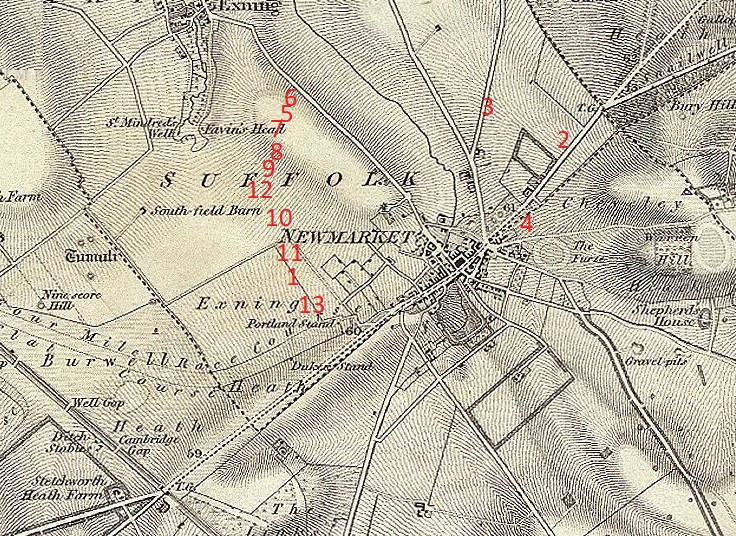
Conrad Allen
Conrad Allen, the son of an actor and grandson of a White City greyhound stadium bookmaker, was better known is his early days as the star of TV advertisements, eating Rice Krispies, Jaffa Cakes and Smarties, or having his blond hair washed with Vosene. He then began working in the Williams & Glyn Bank in London, reportedly earning £150 a week (equivalent to £650 a week in 2020) before choosing to work in stables for £15 a week (£65 in 2020). He began with Tim Moloney before moving on Alan Bailey, but then moved to Mick Ryan and earned a few rides. He became a moderately successful jockey, winning just 4 races from 60 rides, the first of which was aboard Habat Raaphorst at Folkestone in August 1983. That was followed in quick succession with a further win on the same horse at Newcastle just a week later.
January 2014-July 2014 Charlie Fellowes
Charles Henry Fellowes, born 1986, is the son of John Ailwyn Fellowes and Alison Birkmyre, Lord and Lady de Ramsey, whose estate is at Abbots Ripton Hall near Huntingdon. Although Lord de Ramsey was not a frequent racegoer, Charlie's mother owned shares in a racehorse which provided Charlie with the opportunity to attend the local races at Newmarket. Charlie was educated at Leeds University before spending time learning his trade from James Fanshawe. Charles, who is married to Victoria and has a young son Jack, launched his training career early 2014, basing himself initially at Saffron House Stables, but in July 2014 he moved to St Gatien Cottage Stables. Prince of Arran and Chiefofchiefs provided him with some early wins as a trainer. When Luca Cumani announced his retirement in 2019, Charlie purchased the historic 120-box Bedford House Stables.
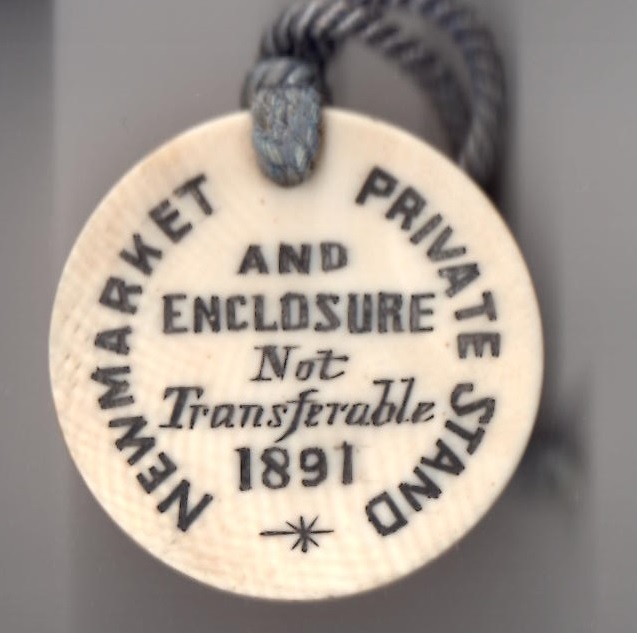
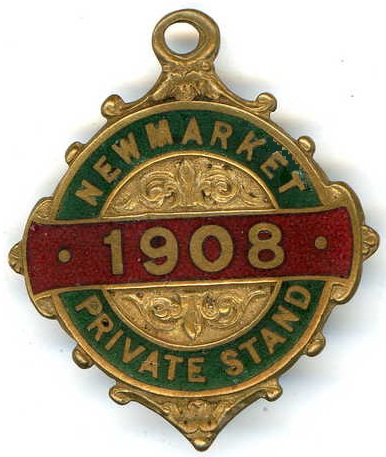
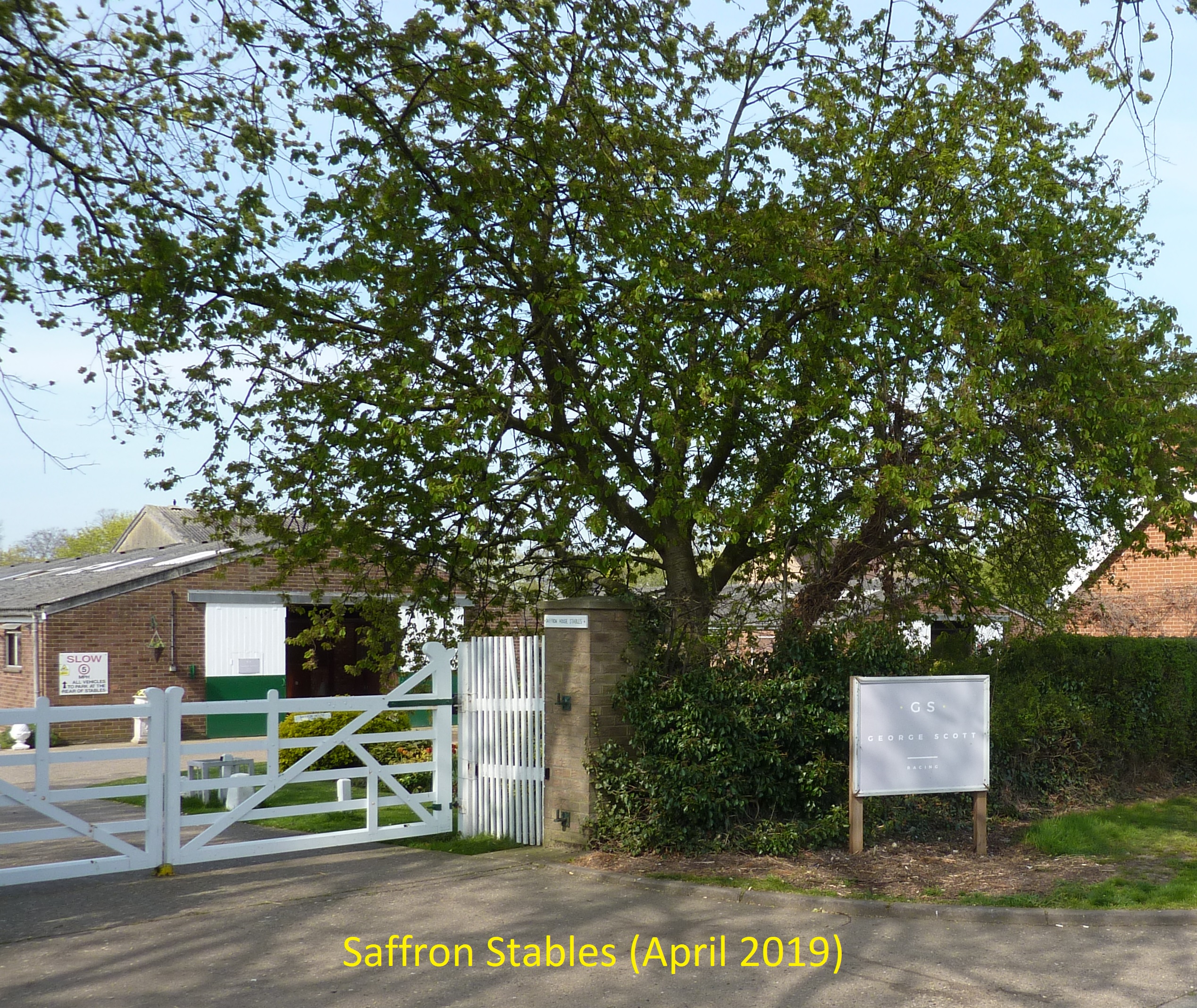
July 2014-2015 Gansera and Stephane Levenque
Ilka Gansera-Leveque, currently the only female trainer in the United Kingdom who is also a trained veterinarian, learnt her trade whilst an apprentice jockey with Bruno Schuetz in Germany. To widen her experience, she spent a year with the innovative Monty Roberts in California at his Flag Is Up Farm, and graduated as a vet in 2009. She completed her British Trainer's course in 2012, after which she launched her training career, initially leasing boxes at Saffron House Stables after Charlie Fellowes, who had only occupied the stables for 6 months, moved to St Gatien Cottage Stables. She, and her husband Stephane, purchased the main yard of Seven Springs Stable, with a capacity for 32 horses, in 2015, after Bill O'Gorman had stepped down, when Seven Springs was split into two parts, naming her part Saint Wendreds.
Henry Spiller is a young, enthusiastic trainer who is destined for great things. His love of horses began when he was just a child. His father used to read him pedigrees instead of bedtime stories! His father, Charles, and mother Fiona set the foundations for Henry to learn and develop his passion for racehorse training. After periods spent with Jeremy Harley and John Oxx at the Curragh, Henry flew the nest and took up a position at Godolphin where he learned the trade from Saeed bin Suroor throughout Great Britain, America and Dubai. Henry struck out on his own with a couple of winners in 2015, training from one of the 2 barns at Saffron House Stables. He moved from Saffron House to Laureate Paddocks in August 2016, but in October 2016 he was based at Savile House Stables in the heart of Newmarket.
November 2015-October 2019 George Scott
George Scott, whose great-grandfather trained in Newmarket, launched his training career in November 2015 at Saffron House Stables and, at the time, was the youngest trainer in Newmarket aged 26. He began his career in racing at Paul Nichol's yard before becoming Pupil Assistant to Michael Bell at Fitzroy House Stables, although he did gain experience in the bloodstock industry in between. He then gained further experience at stables in USA for 2 years from 2012 to 2014, returning to Headquarters to take up the Assistant Trainer's post at Warren Place for Lady Jane Cecil. George spent 4 years at his first stable, Saffron House, before moving down the road to Eve Lodge Stables. His most successful horse during his time at Saffron House was James Garfield, who captured the 2017 Mill Reef Stakes at Newbury, and landed the 2018 Greenham Stakes, also at Newbury.
2017 Mill Reef Stakes JAMES GARFIELD 100/30 owned by Bill Gredley, trained by George Scott and ridden by Frankie Dettori
2018 Greenham Stakes JAMES GARFIELD 3/1 owned by Bill Gredley, trained by George Scott and ridden by Frankie Dettori
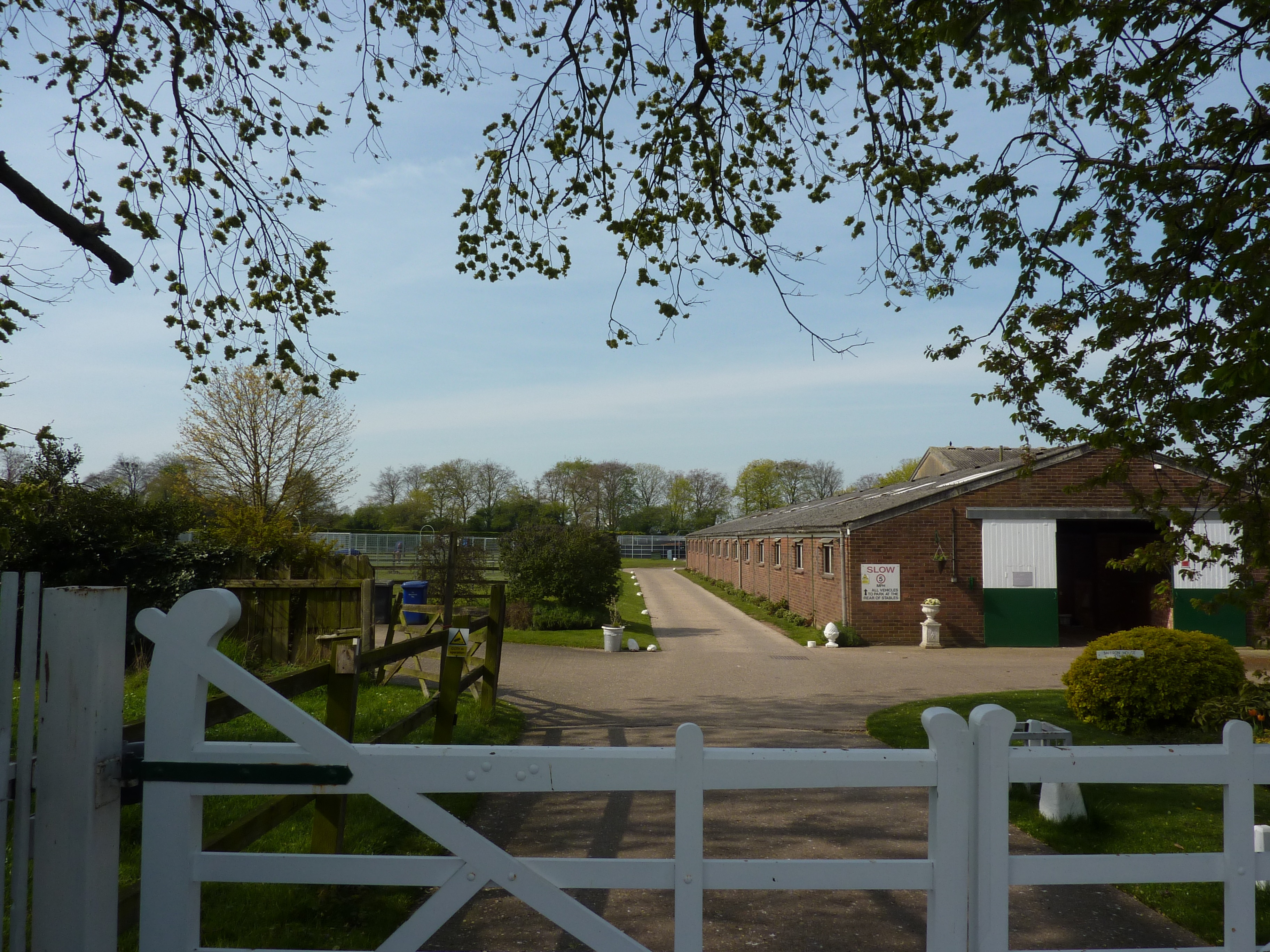
Nov 2019-present George Boughey
George Boughey gained experience of training when he worked for Hugo Palmer and was put in charge of Yellowstone Park Stables on the Hamilton Road. In November 2019, after two years at Yellowstone, he gained his own licence and leased part of Saffron House Stables, further along the Hamilton Road. Initially he took over one barn of 25 boxes, but appreciated that Saffron House gave him the room to expand when the time was right.



